
Published: July 22nd, 2025
Updated: July 25th, 2025
Recently, I modified anthes.is to use my own subsetted
versions of Atkinson Hyperlegible Next and
Atkinson Hyperlegible Mono. Following the principle of eating your own
dog food, I
also switched to Atkinson Hyperlegible Mono in my terminal. After a
month of daily use, I can now assess this font’s practical advantages
and compare it to established programming fonts like JetBrains Mono and
Fira Code.
Download links:
Understanding Atkinson Hyperlegible Mono’s strengths requires examining
the readability challenges programming fonts must address. While many
fonts distinguish between 0 and O, or 1, l, and I, these
represent only two of many cases where character distinction matters.
Typographers call lookalike characters “homoglyphs.” The examples below showcase both homoglyphs and “mirror image” glyphs. Screenshots in this section come from Evaluating Fonts: Font Family Selection for Accessibility & Display Readability.
Multi-character homoglyphs occur when a sequence of glyphs appear to
form a single character. For example, cl can resemble d. Monospace
fonts reduce this problem, since each character occupies equal
horizontal space.


In the “worse” example, letters blend together to resemble different
characters. The “better” examples use subtle details to prevent
this—like Convergence’s curly y and Quando’s serifs.
Single character homoglyphs occur when one glyph resembles
another—such as 8 and B.
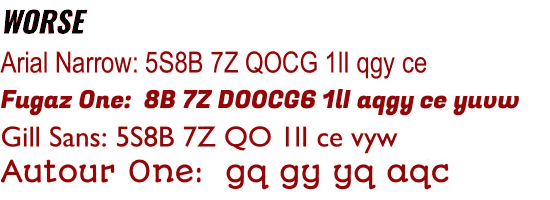
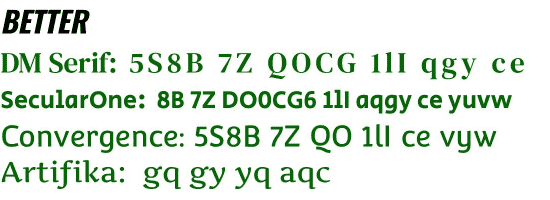
Several problems emerge in the “worse” examples.
O and 0 appear indistinguishable. Nearly the
same applies to u, v, and w.1, l, and I look identical in Gill Sans.The “better” examples address these concerns through deliberate design
choices. SecularOne uses a circle for O and an oval for 0, while the
u, v, and w maintain distinct shapes.
Mirror image glyphs occur when flipping one character creates
another—like d and b. Serif fonts address this by adding
distinguishing serifs, but sans-serif fonts must find other solutions.


Montserrat achieves visual harmony, but creates mirror images.
Convergence solves this with a curly q tail and asymmetrical spurs
that distinguish d from b.
Character distinction proves important in several scenarios:
SELECT * FROM users WHERE id = 'B510', only to realize you meant
SELECT * FROM users WHERE id = '8510'.a1c4e8b versus a1c4e8d.-1 and -l.These examples illustrate that visual distinctiveness proves important in many situations. Still, some questions remain: what informed Atkinson Hyperlegible’s design process, and what makes Atkinson Hyperlegible Mono special compared to other programming fonts?
The Atkinson Hyperlegible family comes from the Braille Institute. Approaching their centennial in 2019, the institute hired Applied Design Works to develop a new brand identity. Applied Design Works needed a font that balanced character differentiation with visual harmony. When existing fonts failed to meet their specific accessibility and branding requirements, they designed their own, naming it after the institute’s founder: J. Robert Atkinson.
Atkinson Hyperlegible earned Fast Company’s 2019 Innovation By Design award. By 2025, Atkinson Hyperlegible generated over 43 million weekly impressions via Google Fonts. The Braille Institute then released enhanced versions: Atkinson Hyperlegible Next and Atkinson Hyperlegible Mono.
The Next variant of Atkinson Hyperlegible expands from 2 to 7 weights and extends language support from 27 to 150+ languages. The Mono version addresses what the Braille Institute called “one of the most requested additions”—a variant for developers.
The Braille Institute, Applied Design Works, and Material Design all detail these design features. Since visual examples showcase typography better than descriptions, this article includes images from Material Design’s blog post.
Annotated images show the proportional version. Where the monospace version differs significantly, non-annotated comparison images follow.
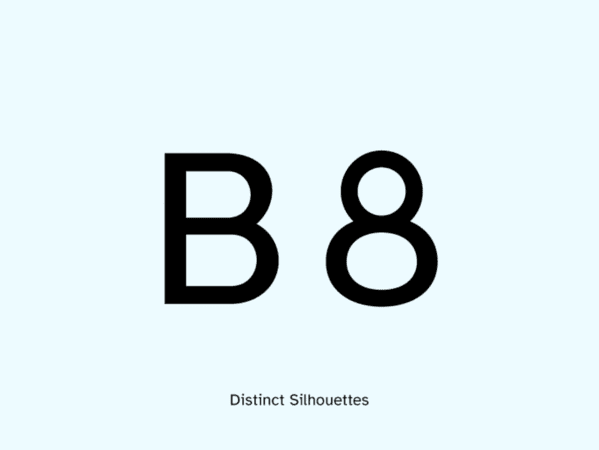
The B features two bowls of different sizes while the 8 combines a
small circle atop a larger oval.
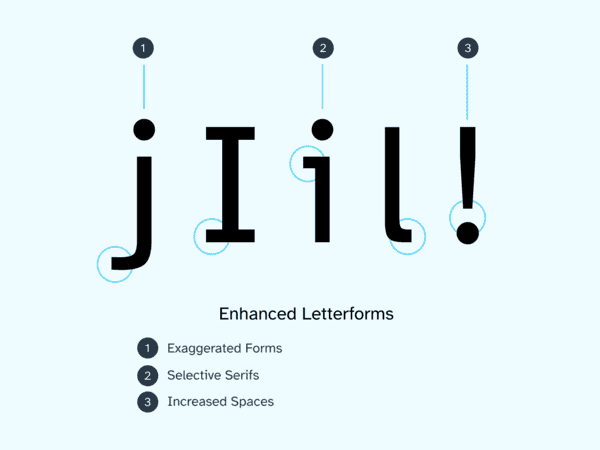
This image highlights several enhancements: the j features an
exaggerated tail, the I gains horizontal top and bottom bars, the i
and l get serifs, and the ! increases spacing between its dot and
vertical stroke.
Since these specific glyphs differ significantly between versions, here’s the monospace variant for comparison:
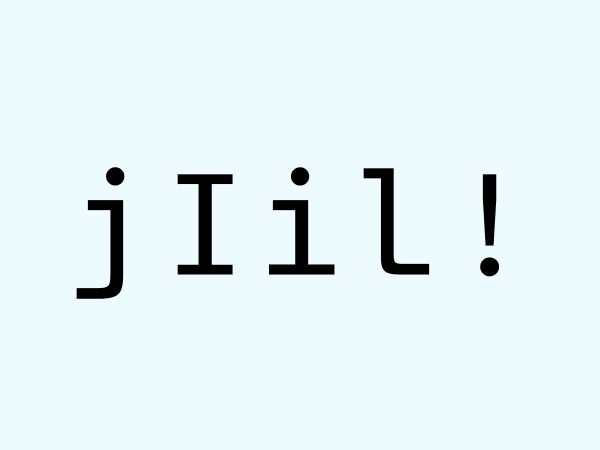
Key differences include:
j and l gain longer feet and leftward serifs.I extends its horizontal bars.i adds a horizontal bottom and longer leftward serif.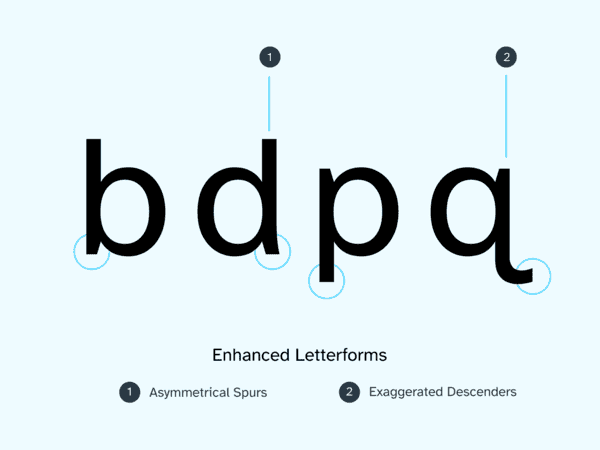
The designers used two techniques to distinguish mirror image glyphs:
b and d—the d features a
thicker spur that juts out more.p and q—the q extends out
into a longer, sweeping tail.How does Atkinson Hyperlegible Mono compare to established programming fonts like JetBrains Mono and Fira Code? While many monospace fonts target readability, direct comparison reveals Atkinson Hyperlegible Mono’s specific advantages.
This comparison focuses on legibility features rather than stylistic preferences or minor aesthetic differences.
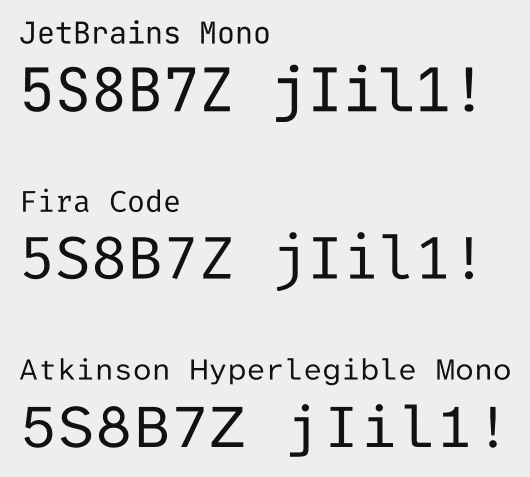
These fonts appear nearly identical at first glance, requiring closer examination to spot the differences.
7 to distinguish it from the
Z.j and smaller curved serif on
the l, distinguishing them within the jIil1! group.8, B, 5, and S. The j and l feature asymmetrical serifs,
while the 5 uses a diagonal rather than vertical downstroke.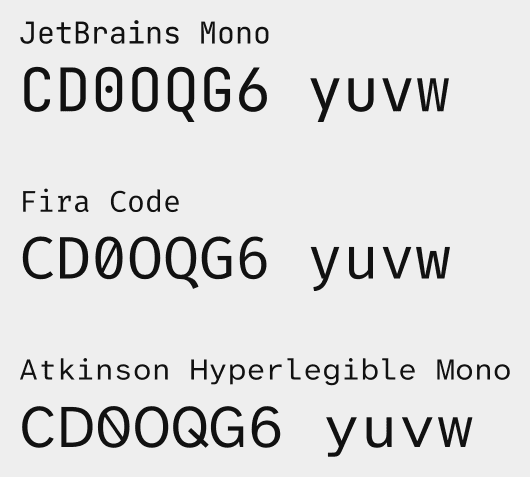
Here the differences become more apparent.
0, O, and Q similarity, though G
and 6 maintain good distinction. y and v appear more similar than
in other fonts.0 and O distinguish themselves through a slash and
width variation, but G and 6 appear similar.Q features
a distinctive middle line, while the 0 uses a reverse slash to avoid
confusion with the null sign in math and the slashed O in
Danish/Norwegian.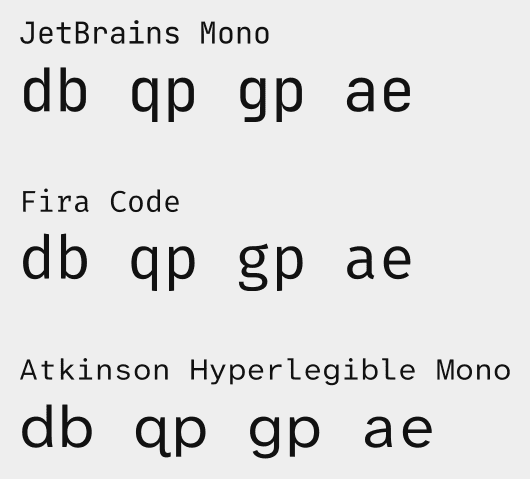
d, b, q, and
p appearing as true mirrors. The a and e also show similarity.d, b, q, and p,
though noticing the differences requires close examination. The g and
p face the same way, and the g appears more ornate. a and e
remain distinct.d, b, q, and p through its asymmetrical design features. The a
and e also maintain clear differentiation.![Font comparison showing programming symbols '\(\)\[\]\{\}\`\'":;.,'
across JetBrains Mono, Fira Code, and Atkinson Hyperlegible
Mono.](/images/programming_symbols_comparison_brackets.6e80af20e769a438d1d180152361408ef1f88cd42dad2157d69d1ac7990c9b17.png)
The programming symbols comparison reveals interesting trade-offs for Atkinson Hyperlegible Mono.
. from , and : from ;.
Ditto for (), [], and {}.(), [], and {} well.[] and {} distinction.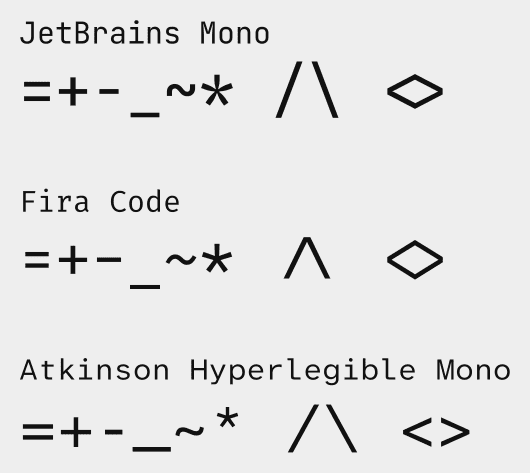
+ and =,
but shortens - relative to those operators.+, =, and -. - and _ share
similar length. The /\ characters join together and render smaller
compared to the other fonts.- and _ show great differentiation, while *
reduces in size and ascends above + for clarity. The <> characters
remain separate rather than joining.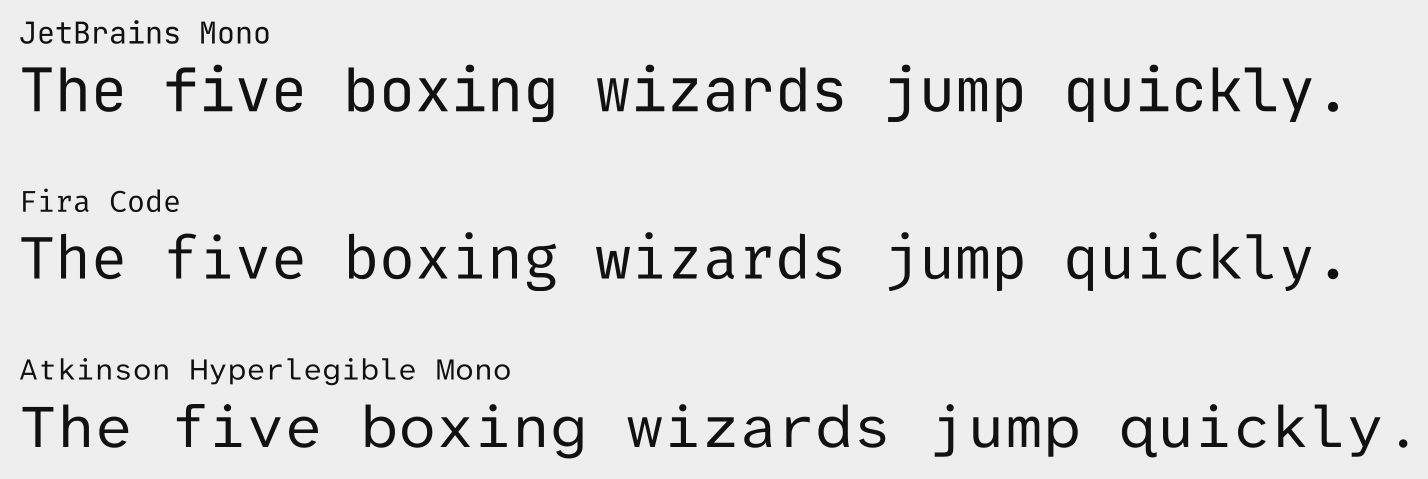
These instructions apply to Unix-like operating systems. In other words: Linux, Berkeley Software Distribution (BSD) derivatives, and other similar operating systems.
While the Braille Institute offers direct downloads, they require email registration and End User License Agreement (EULA) acceptance for an open source font. Open source repositories provide a better alternative.
Make sure you have git installed and available, then clone the
googlefonts/atkinson-hyperlegible-next-mono repository on Github.
$ git clone https://github.com/googlefonts/atkinson-hyperlegible-next-mono
Create the ~/.local/share/fonts directory.
$ mkdir -p ~/.local/share/fonts
Install Atkinson Hyperlegible Mono in ~/.local/share/fonts.
$ cp ./atkinson-hyperlegible-next-mono/fonts/ttf/*.ttf ~/.local/share/fonts/
Build font information cache files.
$ fc-cache -fv
Configure Atkinson Hyperlegible Mono as your default monospace font system-wide and per application. The Arch Wiki’s font configuration guide covers system-wide setup. Terminal emulators and code editors typically set font through settings menus or configuration files.
The Braille Institute and the designers they collaborated with released the Atkinson Hyperlegible fonts under the SIL Open Font License, version 1.1. The website links to a license that reserves “ATKINSON” and “HYPERLEGIBLE” as Reserved Font Names. Anyone that modifies the font must remove those words from the name and metadata. Subsetting counts as modification in many cases.
Since I subset these fonts for performance reasons, I named the derivative versions “Anthesis Legible Sans” and “Anthesis Legible Mono” to honor the license.